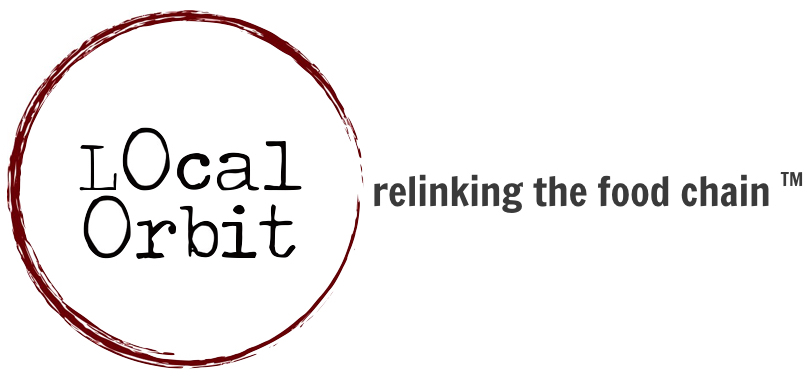Diana is the founder and director of the Good Natured Family Farms’ alliance. Founded by farmers for farmers, the alliance aggregates products from 125 suppliers around Kansas City and provides it to CSA and wholesale customers. Diana will join us for Transparency, Collaboration & Shared Value in Local Food Economies Nov 7-9 in Ann Arbor, MI.
Diana also farms with her husband Gary on Rainbow Organic Farm, a 400-acre organic and 400-acre transitional farm in southeast Kansas. She is a recipient of the National Agriculture Hall of Fame’s Honor Acre and the SBIR Tibbetts Award.
We had the opportunity to discuss the organic growth of their business, initially by highlighting the difference in quality between their tomatoes and commodity tomatoes, and then using partnerships and existing infrastructure to market expand opportunities for other growers.
How did you begin aggregating food from other producers?
Well, it really just organically happened over the last 15 years. We were here at the farm raising greenhouse tomatoes, and we had an overproduction for the market we had nearby. We had a really good relationship with one of the country stores, and then one day I went there and they had a sale that they wanted us to meet. But we would have lost money on it. My husband basically said we should just throw them away rather than take the deal, because it’s not the same quality product and we’re not in the commodity business. We never sold to that market again, and we had all of these tomatoes.
My sisters lived about an hour away in Kansas City, and I asked them where they shopped. I had no background in marketing. I went to a Hen House store owned by Balls Foods with a box of product and found the produce manager. I just walked in and told them about our tomatoes, and he took one bite and said we’ll take all you have. I thought gosh, this is easy.
We put up 6 greenhouses to meet their demand. We were servicing all of their stores and then they started supporting us by doing all the delivery their central warehouse. During that time, everyone knew we were growing the tomatoes and getting them in the stores. Someone called up asking if we could get their honey in the same stores, and after a blind taste test Balls bought it and the honey was the fastest selling honey in four weeks.
So, that’s how it happened and we started bringing everything together and it was about working directly with the store and keeping the farmers calling. We had no infrastructure or ordering mechanisms except calls and emails. Now we work with 125-150 producers and we have about 100 SKUs.
How did you decide to dedicate the resources to moving this beyond a startup?
We started out just trying to cover our costs since we were profitable with sales from our own products. Before Balls Foods started supporting us, we had no resources and our margins were so small, because the idea was to get the farmers what they needed. So, when we started using Balls’ central warehouse that was our early distribution infrastructure. They store a lot of our products for us even for other projects we do, but initially we were just selling to their 30 stores. Why would we build any infrastructure when we had that?
When we started working with produce growers we realized we had too much product. And we realized we needed to sell to more grocery stores, but that we didn’t have any infrastructure and we didn’t want to sell to Ball’s competitors since they’d been so generous and supportive. Around that time, Sysco Kansas City contacted us and they didn’t sell much to grocery stores but focused on institutions. We were also able to use their infrastructure. We knew how to use other folks’ infrastructure to get what we needed done.
Now that’s changing, since we’ve grown and for longevity of the project if something happened to me we need a plan to continue it. So, we’re in the beginning stages of purchasing an existing building with a lot of freezer and cooler space that will be our own distribution center. This will be operated under our non-profit called the Food Conservancy.
What have been challenges to this growth?
Being able to afford the resources, the man-hour resources, to manage everything that needs to be managed while also moving forward before you’re generating enough income. That gap in growth and personnel can be very stressful for your management team. There are two of us managing the Kansas City effort and they we have other folks doing very specific jobs. In some ways that’s good, because you have the depth to understand what works and what doesn’t, but eventually that has to change.
What are the lessons you have to share for others doing this?
We went with the model where you can partner with existing infrastructure and move your food through partnerships, which has the advantage of no money upfront, but it’s limiting. We really needed to have a for-profit and a non-profit structure. The for-profit is the driving force growing the business, while the non-profit handles the training, the outreach, the marketing – all the things that have to be done but that are inefficient for the business to do. We can bring really good product to the marketplace and get good returns to the farmers, but it’s hard to support the training and marketing just through the for-profit’s sales.
You’ll have the opportunity to work directly with Diana, along with a stellar group of supply chain innovators, at Local Orbit’s workshop, Transparency, Collaboration & Shared Value in Local Food Economies, November 7-9. Apply now!

